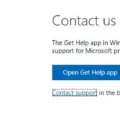In the world of cybercrime, one of the most dangerous attacks is spear phishing. Spear phishing is a type of attack targeting a specific person or group with malicious intent. In this article, we’ll be exploring two notable spear phishing examples: the Ubiquiti Networks Inc. attack and the Nordea Bank Incident.
The Ubiquiti Networks Inc. attack took place in 2019 when hackers tricked employees into transferring $46.7 million to their accounts using impersonation tactics. The attackers posed as an outside entity and high-level employees to target the finance team and request wire transfers. This type of attack is known as “whaling” and is a form of CEO fraud. It’s important to note that attackers often include information they know will be of interest to the target, such as current events or financial documents, in order to make their emails more convincing.
Another major spear phishing incident occurred in 2018 when criminals targeted customers of Nordea Bank with emails containing Trojan viruses that installed keyloggers on victims’ computers and directed them to a fake bank website where hackers intercepted login credentials. This incident was labeled by digital security company McAfee as “the biggest ever online bank heist” and serves as an example of how damaging spear phishing can be if not prevented properly.
These two examples show how easily organizations can fall victim to spear phishing attacks if their employees are not well-informed about such threats and security protocols are not strictly implemented within their networks. Companies must ensure that their staff members are aware of these threats and implement appropriate security measures so that they don’t become a victim like Ubiquiti Networks Inc., or worse yet, Nordea Bank!
Example of Spear Phishing
A real example of spear phishing is the incident that occurred with Ubiquiti Networks Inc. In 2020, hackers targeted the company’s finance team and sent emails from a spoofed address that appeared to be from an outside entity. These emails requested wire transfers totaling $46.7 million and were signed by high-level employees. Unfortunately, the attack was successful and the money was transferred before the fraud could be detected. This is an example of a successful spear phishing attack, which demonstrates how effective these techniques can be for malicious actors looking to steal money or sensitive data.

Source: blog.frontiersin.org
Understanding Spearing Phishing
Spear phishing is a type of targeted cyber attack that involves the use of malicious emails with the intent of gathering sensitive information or gaining access to secure systems. Unlike general phishing attacks which are sent out in bulk to a large number of recipients, spear phishing attacks are tailored to target specific individuals, organizations, or groups. The emails may appear to come from a trusted source and often contain personal information about the recipient, such as their job title, contact details, or current events. The goal is to get recipients to click on malicious links or provide confidential data such as login credentials or financial information. Spear phishing can be particularly dangerous because it often goes undetected due to its personalized nature and can lead to significant consequences if successful.
Examples of Famous Phishing Scams
The Nordea Bank Incident is a famous example of phishing. Phishing is an attempt to gain access to sensitive information such as usernames, passwords, and credit card details by masquerading as a trustworthy entity in an electronic communication. In this incident, hackers sent out phishing emails containing Trojan viruses that installed a keylogger into the victims’ computers and directed them to a fake bank website where they intercepted login credentials. This allowed the hackers to gain access to the customers’ bank accounts without their knowledge or permission. The incident caused significant financial losses for Nordea customers, making it one of the most well-known examples of phishing that exists today.
Examples of Spear Phishing Attacks
1. An email from a company executive asking an employee to wire money to an unknown account.
2. A text message from a seemingly legitimate source asking for sensitive information such as login credentials or financial information.
3. A malicious link or attachment sent via email that installs malware on the recipient’s computer when clicked.
4. A phone call from a person claiming to be a customer service representative, requesting personal information such as credit card numbers and passwords.
5. An email containing suspicious links or requests for action that appear to be from an internal contact within the organization, but are actually sent by an external attacker.
Identifying the Tactics of Spear Phishing
Spear phishers target specific individuals or organizations with malicious emails and other forms of communication. They use information gathered from the internet, such as job titles, company names, and contact information, to make their messages seem more legitimate. The goal of spear phishing is to gain access to sensitive data or financial accounts. To do this, they may ask for personal details such as usernames and passwords, or they may include malicious links or attachments that, when clicked on or opened, will install malware or ransomware on the target’s computer. Spear phishers may also use social engineering techniques in their emails to try and persuade their targets into opening attachments and providing the requested information.
Understanding Phishing and Examples
Phishing is a type of cyber attack through which criminals attempt to gain access to sensitive information such as passwords, credit card numbers, and other confidential data by masquerading as a trustworthy organization or individual. The attackers usually send emails or messages that appear to be from a legitimate source, such as a bank or government agency. Examples of phishing attacks include:
1. Send an email with a malicious link that redirects the victim to a fraudulent website where they are asked to enter personal information.
2. Creating fake websites that look like genuine ones and asking the victims to enter their login credentials or credit card information.
The Difference Between Spear Phishing and Spam
Spear phishing is a targeted form of phishing that involves sending malicious emails to carefully selected targets. These emails are crafted to appear as if they are coming from a legitimate source, like a trusted colleague or an authoritative figure. The goal of spear phishing is to gain access to sensitive information by getting the target to click on a malicious link or attachment.
Spam, on the other hand, is an unsolicited and indiscriminate email sent out in bulk to large numbers of recipients. Spam emails often contain malicious links or attachments and can lead to malware if clicked on. Unlike spear phishing, spam does not target specific individuals or organizations and does not require any personalization.
Detecting Spear Phishing
Spear phishing is a form of cyber attack where the attacker sends emails or messages to a specific target, typically using social engineering techniques such as impersonation to attempt to gain access to sensitive information or resources. To detect spear phishing, it is important to be aware of the warning signs. Look out for emails that contain suspicious links or attachments, especially if they come from an unknown sender. Be wary of emails that request personal information or ask you to download something. Additionally, pay attention to any requests for urgent action and double-check the email address of the sender. Finally, be sure to investigate any unexpected emails from known contacts, as they may have been hacked and used in a spear-phishing attack.
Target of Spear Phishing
Spear phishing often targets employees, customers, and partners in a particular organization. It’s highly targeted and personalized to the individual or group it’s aimed at. This means that the attacker will use information about the target to craft convincing emails, often spoofing a legitimate address or using a company’s own branding to make the email look more real. The email might contain links to malicious websites or attachments with malicious code. Spear phishing attacks are typically used for financial gain, competitive intelligence gathering, or data theft.

Source: rd.com
Types of Phishing
1. Spear Phishing: This type of phishing targets a specific individual or organization with an email containing malicious links or attachments. It is often personalized and may appear to come from a person or entity that the recipient knows or trusts.
2. Whaling: Whaling is a more targeted version of spear phishing that specifically targets high-profile individuals such as executives and CEOs. The emails are often more personalized and contain sophisticated social engineering tactics in order to gain access to sensitive information.
3. Vishing: Vishing is a form of phishing that uses voice technology, typically via landlines or VoIP services, to gain access to confidential information. An automated call will ask the recipient to provide personal details such as bank account numbers, passwords, and other sensitive information.
4. Email Phishing: Email phishing involves sending malicious emails disguised as legitimate messages in order to steal personal data such as usernames, passwords, credit card numbers, and other confidential information. These emails often contain malicious links or attachments that can lead to further attacks if clicked on.
Identifying a Typical Phishing Email
A typical phishing email is an unsolicited email that appears to be sent from a legitimate source. It typically contains a sense of urgency or tries to scare the recipient into taking some kind of action. The email may include personal information, greetings, misspellings, unofficial “from” email addresses, unfamiliar web pages, and/or misleading hyperlinks. It may also ask for additional personal information or money. The ultimate goal of the attacker is to gain access to sensitive data or financial resources.
Conclusion
In conclusion, spear phishing is an increasingly common cybercrime that can have devastating consequences for companies and individuals alike. Attackers employ a variety of tactics to target their victims, such as impersonating executives and crafting emails with information tailored to the target’s interests. Companies need to remain vigilant in educating their employees about the dangers of spear phishing and implementing strong security protocols to protect against these types of attacks. By remaining aware of the potential threats posed by spear phishing, organizations can help mitigate the risk of falling victim to this type of scam.








